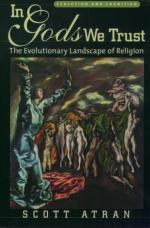|
This section contains 279 words (approx. 1 page at 300 words per page) |
A landscape is the cumulative product of interaction among dynamic geological processes over time. A region's topography and suite of characteristic landforms are, thus, clues to its geologic history. For example, the landscape of rugged, linear mountain chains, deep canyons, dry lake beds, and mesas in the United States'desert southwest tells a geologic story of fluvial and Eolian erosion acting during a period of increasing climatic aridity while plate tectonic forces caused crustal extension and uplift. Earth processes carve a landscape; dynamic interactions between processes control its evolution over time.
The earth's internal heat drives plate tectonic motion and influences the related processes of crustal uplift, magmatic intrusion, volcanism, crustal deformation, and seismic activity. External heat from the Sun forces circulation of Earth's atmosphere and hydrosphere, which in turn drives sedimentary processes such as weathering, erosion, transportation, and deposition. These forces, interacting under the influence of gravity, shape Earth's surface.
Earth processes interact in complex feedback systems. A change in the rate or directional alignment of one process—for example, an increase in rainfall or the abandonment of a river channel—may start a cascade of compensatory changes throughout a region. Plate-tectonic mountain-building and erosion interact in a negative feedback system that regulates the elevation of continental mountain belts. Elevation interacts with temperature and rainfall, the components of climate, to regulate rates of erosion. Climate interacts with vegetation to create soils. A balance between precipitation and temperature maintains a glacier. These are just a few examples of the dynamic processes that shape a regional landscape, and of the interactions that remold an existing array of landforms over time.
See Also
|
This section contains 279 words (approx. 1 page at 300 words per page) |


